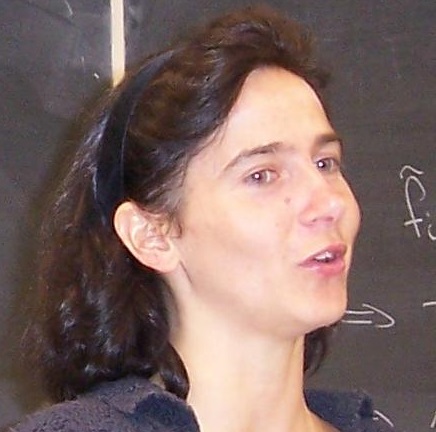12.E: Exercises
( \newcommand{\kernel}{\mathrm{null}\,}\)
Calculational Exercises
1. In each of the following, find matrices A,x, and b such that the given system of linear equations can be expressed as the single matrix equation Ax=b.
(a) 2x1−3x2+5x3=79x1−x2+x3=−1x1+5x2+4x3=0} (b) 4x1−3x3+x4=15x1+x2−8x4=32x1−5x2+9x3−x4=03x2−x3+7x4=2}
2. In each of the following, express the matrix equation as a system of linear equations.
(a)[3−12437−215][x1x2x3]=[2−14] (b)[3−201502−23147−2516][wxyz]=[0000]
3. Suppose that A,B,C,D, and E are matrices over F having the following sizes:
A is 4×5, B is 4×5, C is 5×2, D is 4×2,
Determine whether the following matrix expressions are defined, and, for those that are defined, determine the size of the resulting matrix.
(a) BA (b) AC+D (c) AE+B (d) AB+B (e) E(A+B) (f)E(AC)
4. Suppose that A,B,C,D, and E are the following matrices:
A=[30−1211], B=[4−102], C=[142315],D=[152−101324], and E=[613−112413].
Determine whether the following matrix expressions are defined, and, for those that are defined, compute the resulting matrix.
(a) D+E (b) D−E (c) 5A (d) −7C (e) 2B−C(f) 2E−2D (g) −3(D+2E) (h) A−A (i) AB (j) BA(k) (3E)D (l) (AB)C (m) A(BC) (n) (4B)C+2B (o) D−3E(p) CA+2E (q) 4E−D (r) DD
5. Suppose that A,B, and C are the following matrices and that a=4 and b=7.
A=[152−101324],B=[613−112413], and C=[152−101324].
Verify computationally that
(a) A+(B+C)=(A+B)+C (b) (AB)C=A(BC)(c) (a+b)C=aC+bC (d) a(B−C)=aB−aC(e) a(BC)=(aB)C=B(aC) (f)A(B−C)=AB−AC(g) (B+C)A=BA+CA (h)a(bC)=(ab)C(i) B−C=−C+B
6. Suppose that A is the matrix
A=[3121]
Compute p(A), where p(z) is given by
(a) p(z)=z−2 (b) p(z)=2z2−z+1(c) p(z)=z3−2z+4 (d) p(z)=z2−4z+1
7. Define matrices A,B,C,D, and E by
A=[3121], B=[4−102], C=[2−359−11154],D=[152−101324], and E=[613−112413].
(a) Factor each matrix into a product of elementary matrices and an RREF matrix.
(b) Find, if possible, the LU-factorization of each matrix.
(c) Determine whether or not each of these matrices is invertible, and, if possible, compute the inverse.
8. Suppose that A,B,C,D, and E are the following matrices:
A=[30−1211], B=[4−102], C=[142315],D=[152−101324], and E=[613−112413].
Determine whether the following matrix expressions are defined, and, for those that are defined, compute the resulting matrix.
(a) 2AT+C (b) DT−ET (c) (D−E)T(d) BT+5CT (e) 12CT−14A (f) BBT(g) 3ET−3DT (h) (2ET−3DT)T (i) CCT(j) (DA)T (k) (CTB)AT (l) (2DT−E)A(m) (BAT−2C)T (n) BT(CCT−ATA) (o) DTET−(ED)T(p) trace(DDT) (q) trace(4ET−D) (r) trace(CTAT+2ET)
Proof-Writing Exercises
1. Let n∈Z+ be a positive integer and ai,j∈F be scalars for i,j=1,…,n. Prove that
the following two statements are equivalent:
(a) The trivial solution x1=⋯=xn=0 is the only solution to the homogeneous system of equations
∑nk=1a1,kxk=0⋮∑nk=1an,kxk=0}.
(b) For every choice of scalars c1,…,cn∈F, there is a solution to the system of equations ∑nk=1a1,kxk=c1⋮∑nk=1an,kxk=cn}.
2. Let A and B be any matrices.
(a) Prove that if both AB and BA are defined, then AB and BA are both square matrices.
(b) Prove that if A has size m×n and ABA is defined, then B has size n×m.
3. Suppose that A is a matrix satisfying ATA=A. Prove that A is then a symmetric matrix and that A=A2.
4. Suppose A is an upper triangular matrix and that p(z) is any polynomial. Prove or give a counterexample: p(A) is a upper triangular matrix.
Contributors
- Isaiah Lankham, Mathematics Department at UC Davis
- Bruno Nachtergaele, Mathematics Department at UC Davis
- Anne Schilling, Mathematics Department at UC Davis
Both hardbound and softbound versions of this textbook are available online at WorldScientific.com.


